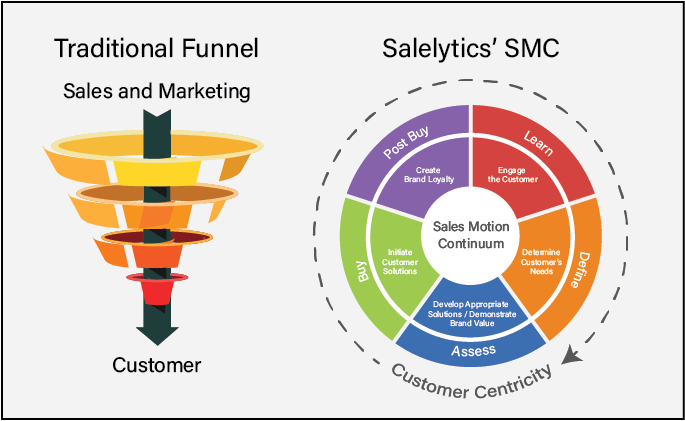As businesses continue to evolve, so does the way they approach sales. While we at Salelytics live and breathe inside sales, we understand that for a lot of people it’s unknown territory. That’s why we’re breaking down 10 of the most frequently asked questions about inside sales.
Q1: What is inside sales?
Answer:
Inside sales refers to the process of selling products or services remotely, using digital communication tools like phone calls, emails, video conferencing, and other online platforms. Unlike traditional outside sales, inside sales representatives engage with leads and prospects without physically meeting them. Basically, selling from inside the office, hence inside sales. This model has gained traction due to its efficiency, cost-effectiveness, and adaptability to the modern business landscape. For a more indepth answer we have a whole blog dedicated to this topic which you can read here.
Q2: How does inside sales differ from outside sales?
Answer:
Inside sales and outside sales both share the goal of driving revenue, but their methods and contexts differ. Inside sales relies on virtual interactions, like phone calls to connect with leads. In contrast, outside sales involve face-to-face meetings and a physical presence. Both have their place in the market, but inside sales is often favored for its scalability, broader reach, and ability to adapt to rapidly changing market conditions. Want to dive deeper? Click here.
Q3: What skills are essential for success in inside sales?
Answer:
Successful inside sales professionals possess a combination of interpersonal, communication, and technological skills. They excel in active listening, problem-solving, and adapting their communication style to different audiences. Additionally, proficiency in using CRM (Customer Relationship Management) tools, understanding data analytics, and being tech-savvy are crucial for navigating the digital landscape of inside sales.
Q4: How important is technology in inside sales?
Answer:
Technology is the backbone of inside sales. From CRM systems that organize customer data to communication tools facilitating virtual interactions, technology streamlines the sales process. AI-powered analytics, chatbots, and other advanced tools help inside sales teams make data-driven decisions, personalize interactions, and enhance overall efficiency. Want to learn more about what CRM’s are and which is right for you? Click here!
Q5: What is the role of social media in inside sales?
Answer:
Social media plays a pivotal role in inside sales by providing a platform to connect with leads, share valuable content, and build relationships. Platforms like LinkedIn, Twitter, and Facebook offer opportunities for networking, prospecting, and showcasing expertise. A strategic social media presence can enhance brand visibility and credibility in the eyes of potential customers.
Q6: How do you effectively manage leads in inside sales?
Answer:
Lead management is a crucial aspect of inside sales. Implementing a strong CRM system helps organize and track leads throughout the sales pipeline. Automation tools can assist in lead nurturing, ensuring timely and personalized interactions. It's essential to prioritize leads based on their likelihood to convert, allowing sales teams to focus their efforts where they are most likely to yield results.
Q7: What role does content play in inside sales?
Answer:
Content is a powerful tool in inside sales, serving multiple purposes. Well-crafted content, such as blog posts, slicks, and case studies, can establish your brand as an industry authority. In the sales process, personalized and relevant content helps nurture leads, providing them with valuable insights and building trust. Content also aids in addressing common customer pain points, positioning your product or service as a solution.
Q8: How do you handle objections in inside sales?
Answer:
Handling objections is a skill every inside sales professional must master. The key is to listen actively, acknowledge the concern, and then address it effectively. This involves having a deep understanding of the product or service, being prepared for common objections, and presenting solutions. It's crucial to turn objections into opportunities for further discussion, demonstrating your commitment to meeting the customer's needs.
Q9: What strategies can be employed for effective remote team collaboration in inside sales?
Answer:
Effective remote team collaboration is vital for inside sales success. Utilize collaboration tools such as project management platforms, video conferencing, and instant messaging to keep the team connected. Regular virtual meetings, clear communication channels, and fostering a culture of transparency can enhance teamwork and productivity in a remote setting.
Q10: How do you measure the success of inside sales efforts?
Answer:
Measuring the success of inside sales involves tracking key performance indicators (KPIs) such as conversion rates, lead response time, and customer acquisition costs. Utilize analytics tools to gain insights into customer behavior, monitor sales team performance, and assess the effectiveness of various sales strategies. Regularly review and adapt your metrics to align with the evolving goals of your inside sales initiatives.
Conclusion:
Inside sales is a dynamic and evolving field, marked by the fusion of interpersonal skills and cutting-edge technology. As businesses continue to embrace remote interactions, understanding the nuances of inside sales becomes increasingly vital. Whether you're a seasoned professional or a newcomer to the sales arena, we hope these FAQs serve as a guide to navigate the intricacies of inside sales successfully.

![Solutions]() Overview Full Account Management Funnel Development Sole Territory Coverage Team Sell Customer Care Patient Centric International Support
Overview Full Account Management Funnel Development Sole Territory Coverage Team Sell Customer Care Patient Centric International Support![Industries]()
![Technology]() Overview Omnichannel Experience Sales Enablement Strategy Optimization Data Science and Language Technology
Overview Omnichannel Experience Sales Enablement Strategy Optimization Data Science and Language Technology![Careers]()
![About]()
![About]() Careers Current Open Positions Work From Home Professional Development Salelytics Recruiting Team About Salelytics Our Locations Contact Us Blog
Careers Current Open Positions Work From Home Professional Development Salelytics Recruiting Team About Salelytics Our Locations Contact Us Blog





.png)

.jpg)
.jpg)
